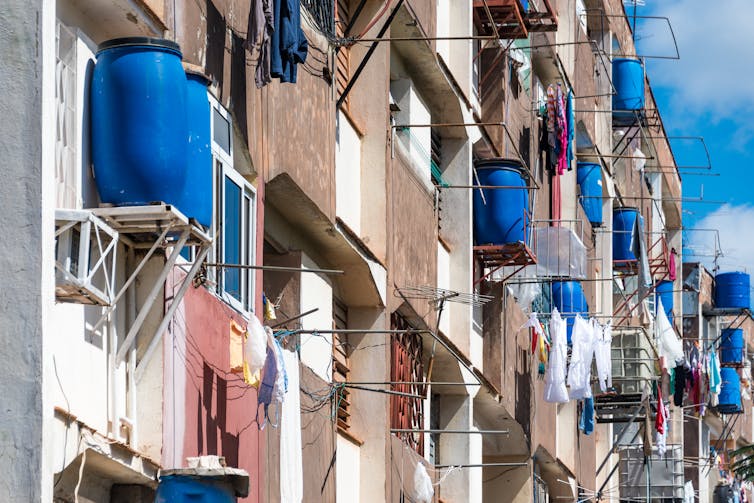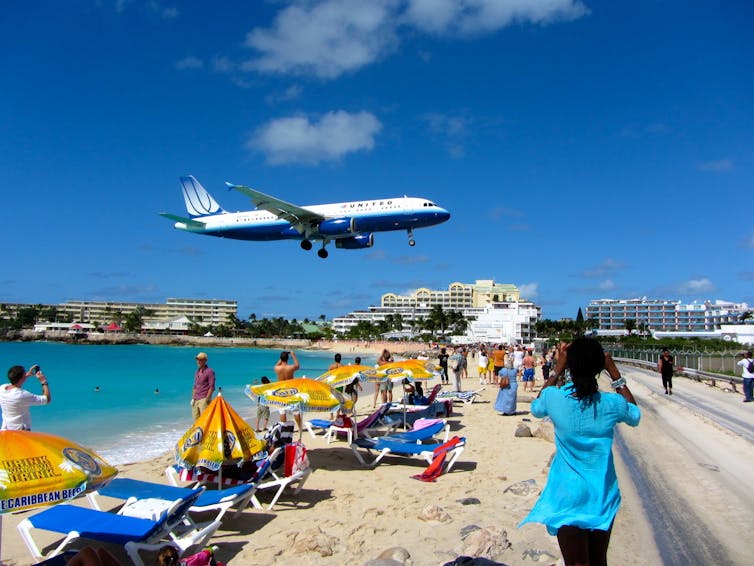In the imagination of many, the Caribbean is an exotic sanctuary to which one can retreat. Nevertheless, a crisis is concealed beyond the picturesque hotel grounds and balmy coastlines; it is unlike any other that its inhabitants have ever encountered.
The Caribbean island administrations have issued warnings that future water scarcity may be the norm in the midst of a water crisis.
Each island in the vicinity has experienced a water scarcity of some form in the past five years. As an illustration, Trinidad is currently experiencing its most severe drought in recent history. Consequently, residents are subject to water restrictions that will remain in effect until at least June 2024. Failure to comply with these restrictions will result in financial penalties.
Dominica, the “nature island” of the Caribbean, is renowned for its mountain rain forests and is currently experiencing a significant depletion of freshwater resources and an increase in the frequency of water scarcity. The water systems of Grenada, which is also referred to as the “spice island,” have been affected by drought on a national scale.

Apartments in Havana, Cuba, store water to ensure that they have sufficient supplies during periods of public inactivity.
In recent years, Jamaica has been compelled to implement water shutoffs, which restrict water access to specific regions to a few hours daily, in order to address water scarcity issues it is currently facing. Water rationing has been mandated in St. Kitts and St. Vincent. Barbados has experienced numerous water prohibitions in recent years.
The Caribbean is, in truth, one of the most water-stressed regions in the world, according to recent data.
My research pertains to disasters and critical infrastructure, with an emphasis on the Caribbean. It is essential to have water that is suitable for human consumption and public health. Therefore, it is imperative to comprehend the fundamental factors that are responsible for the water crisis and to develop cost-effective strategies to improve the infrastructure of the water supply.
The demand for water exceeds the supply due to three factors.
The Caribbean’s water supply has been insufficient for a variety of reasons, in addition to droughts and altering precipitation patterns.
1. The pace of industrialization and urbanization is increasing.
The Caribbean is one of the regions that is urbanizing at the fastest rate in the world. The strain on public water systems is exacerbated by the fact that an increasing proportion of the population, approximately three-quarters, resides in urban areas.
Concurrently, the soil’s ability to retain water has been reduced as a result of the encroachment of sensitive water catchment areas and the degradation of water quality due to increased agricultural and industrialization.
An aircraft descends into Sint Maarten. Visitors to numerous islands that depend on tourism frequently prioritize water priorities. Flickr user Richie Diesterheft, CC BY-SA
Stream volumes have been diminished and water from sensitive sources has been extracted due to the competition for scarce freshwater. The inhabitants of Dennery North, a prominent agricultural community in St. Lucia, have been constrained to obtain water for their homes and plantations from rivers and alternative sources due to water scarcity.
Groundwater extraction that is not regulated can also exacerbate the problem. Many islands are dependent on groundwater.
For instance, Jamaica’s water supply is 84% groundwater, while Barbados’ supply is 90% groundwater. Nevertheless, the capacity of aquifers and groundwater to recharge is being impeded by escalating demand and changes in annual precipitation patterns. As a result, the supply is insufficient to satisfy the demand. This is a substantial concern for the Honduras-offshore island of Utila, where the annual rate of aquifer recharge is currently 2.5%. Conversely, Barbados’ recharge rate fluctuates between 15% and 30% of the annual precipitation.
2. The water-intensive operations of the tourism sector
Undoubtedly, the Caribbean is a highly sought-after tourist destination, and the sustainability of tourist economies is contingent upon the availability of significant quantities of water.
Hotels and other tourist-dependent locations are prioritized for water diversion, even in times of water scarcity. Violators may be penalized and have to provide water to adjacent residents, and they may be left without water for days or even hours.
Tourism contributes to the contamination of water resources in addition to increasing water consumption. The tourism industry’s water demand and discharge are exacerbated by the construction of golf courses in order to attract more visitors.
3. Governance of water infrastructure is inadequate.
Water systems encounter additional challenges due to inadequate governance, which results in substantial purified water losses prior to consumer delivery.
Typically, a water utility that is operating efficiently will have nonrevenue water losses (WWW) below 30%. The average percentage of nonrevenue water levels in the Caribbean is 46%, while some regions experience levels as high as 75%.
Improper management practices, metering errors, leakage, and larceny are among the causes.
Water insecurity is further exacerbated by climate change and extreme weather conditions.
These water systems that are problematic may encounter obstacles, even on days that are favorable. The intensification of extreme weather phenomena, such as hurricanes and flooding, can result in severe infrastructure damage, which can result in costly restoration efforts and prolonged power disruptions.
The Caribbean is the second most vulnerable region to disasters on a global scale. Cyclones, landslides, earthquakes, and other destructive natural calamities are frequently experienced by the islands. An elevated risk of these consequences is linked to sea level rise, extreme weather, and storm surges that result in erosion, inundation, and saline contamination.
Three months after Hurricane Maria struck in 2017, nearly 14% of the Caribbean population was still without access to potable water. The nation’s Water and Sewerage Corp. and Grand Bahama Utility Co. suffered damages totaling U$54 million as a result of Hurricane Dorian in 2019. One year after Hurricane Dorian, WSC was still in the process of restoring operations to pre-Hurricane Dorian levels.
The advantages of hybrid rainfall catchment
Each of these obstacles must be resolved in order to enhance water access in the Caribbean. Minimizing water loss as a result of larceny and leakage can be facilitated by improved governance and investment. The reduction of waste at resorts and hotels can be facilitated by educating guests and applying social and governmental pressure.
Furthermore, there are methods for increasing the water supply. One involves the implementation of a more strategic approach to the islands’ utilization of a time-honored method that has been used in the region: rainwater harvesting.
Rainwater harvesting is the process of collecting and storing precipitation, which is typically derived from rooftop discharge. It is capable of substituting irrigation or treating water for domestic purposes.

Rainwater harvesting is not currently integrated into the centralized water management system of the islands. Households are accountable for the financing, construction, and maintenance of their own systems. It can be difficult to locate technical support, which necessitates households to manage seasonal fluctuations in water quality and quantity. This complicates the identification of potential hazards to the safety of potable water.
Combining rainwater collection and central water systems in a managed hybrid water model may facilitate the expansion of rainwater collection and address water-related issues in the region.
Although the integration of decentralized sources can be challenging and necessitate the use of separate pipelines, it is a relatively new concept that has the potential to alleviate water stress. In the event of water scarcity, decentralized water sources, including recycled gray water, rainwater harvesting, and groundwater, may be employed as backup sources or to supply water for nonpotable purposes (e.g., irrigation or lavatory flushing) in order to decrease the need for treated water.
As a potential solution to the upcoming challenges associated with the provision of secure, safe, and sustainable water, Australian engineers are presently assessing the feasibility of hybrid water systems.
Respect for a fundamental right is observed in the islands.
The World Health Organization has declared that access to a reliable, secure, and ample water supply is a fundamental human right. In order to fulfill this obligation, water suppliers are required to provide sufficient quantities of potable water.
The utilization of hybrid water systems has the potential to improve the resilience of water systems in the Caribbean in the face of environmental and human pressures, as well as the safety and security of island communities’ water. Water suppliers are required to guarantee the availability of adequate quantities of potable water, particularly during emergency situations.

